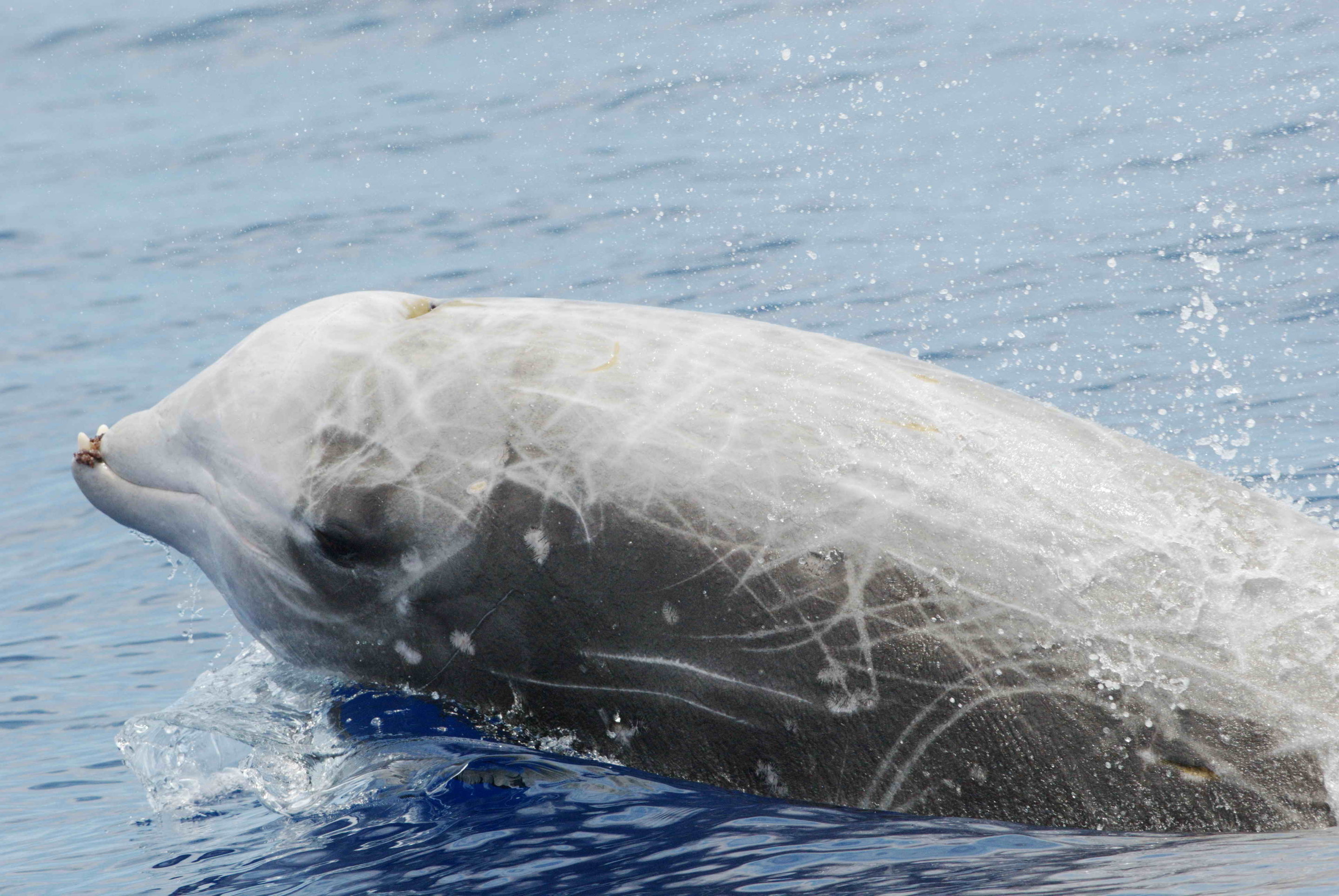Behavior and Ecology

Spade toothed beaked whales – Spade-toothed beaked whales, like many other beaked whales, are elusive and challenging to study. However, scientists have gained some insights into their behavior and ecology through various research methods.
Social Behavior and Group Dynamics
Spade-toothed beaked whales are known to be social animals, often forming small groups of up to 10 individuals. These groups are typically composed of females and their calves, with males joining during the breeding season. Within these groups, individuals maintain strong bonds and engage in cooperative behaviors, such as babysitting and food sharing.
Feeding Habits
Spade-toothed beaked whales are deep-diving predators, primarily feeding on squid and fish. They use echolocation to locate their prey and employ suction feeding to capture it. Their diet is relatively diverse, including various species of squid, deep-sea fish, and even small sharks.
Communication Patterns
Beaked whales, including spade-toothed beaked whales, communicate using a variety of vocalizations. They produce high-pitched clicks and whistles, which are believed to play a role in echolocation, group cohesion, and mating rituals. These vocalizations are complex and vary among different species, allowing them to recognize and communicate with each other.
Habitat Preferences
Spade-toothed beaked whales inhabit deep-water environments, typically found in waters deeper than 1,000 meters. They prefer areas with steep underwater slopes, canyons, and seamounts. These habitats provide them with access to their prey and offer protection from predators.
Migration Patterns
Spade-toothed beaked whales are believed to be migratory, moving between different areas throughout the year. However, their migration patterns are not well understood due to the difficulty in tracking these elusive animals. Some evidence suggests that they may move to shallower waters during the summer months and return to deeper waters during the winter.
Potential Threats
Spade-toothed beaked whales face several potential threats, including habitat loss, noise pollution, and bycatch in fishing gear. Human activities such as oil and gas exploration, military sonar, and commercial fishing can disrupt their behavior, communication, and feeding habits. Climate change may also pose a threat by altering their habitats and prey availability.
Diving Capabilities
Spade-toothed beaked whales are remarkable divers, capable of reaching depths of over 1,500 meters. They possess physiological adaptations that allow them to withstand the extreme pressures and low oxygen levels at such depths. Their bodies can collapse and their hearts can slow down to conserve energy during deep dives.
Echolocation Abilities, Spade toothed beaked whales
Spade-toothed beaked whales use echolocation to navigate, find prey, and communicate. They produce high-frequency clicks that bounce off objects and return to their ears, providing them with detailed information about their surroundings. Their echolocation system is highly advanced, allowing them to detect objects and create a mental map of their environment.
Conservation and Research: Spade Toothed Beaked Whales

Spade-toothed beaked whales face numerous challenges that threaten their survival. One significant issue is bycatch, where they are accidentally caught in fishing gear, leading to injury or death. Habitat degradation, such as noise pollution from shipping and seismic surveys, can also disrupt their communication and foraging patterns.
Research Efforts
Studying spade-toothed beaked whales poses challenges due to their elusive nature and deep-diving habits. Acoustic monitoring, involving the use of hydrophones to detect and record their vocalizations, has been instrumental in understanding their communication and behavior. Genetic analysis of biopsy samples collected from individuals has provided insights into their population structure and genetic diversity.
Conservation Measures
To protect spade-toothed beaked whales, conservation efforts focus on mitigating bycatch and reducing habitat degradation. Implementing fishing regulations that limit the use of certain gear types and promoting responsible fishing practices can help minimize bycatch. Reducing noise pollution through the implementation of marine protected areas and regulations on shipping and seismic activities is also crucial for their conservation.
Research Directions
Continued research is essential to better understand the biology, behavior, and conservation needs of spade-toothed beaked whales. Long-term monitoring programs can track population trends and assess the effectiveness of conservation measures. Studies on their diet and foraging habits can provide insights into their ecological role and vulnerability to changes in prey availability. Investigating the impact of climate change on their distribution and behavior is also an important area of research.
Spade toothed beaked whales are fascinating creatures that live in the deep ocean. They have a unique spade-shaped snout and a long, slender body. These whales are not well-known because they spend most of their time underwater. But they are still an important part of the marine ecosystem.
If you’re interested in learning more about spade toothed beaked whales, I recommend checking out the website bobby witt jr home runs 2024. This website has a lot of great information about these amazing creatures.
Spade toothed beaked whales are a reminder that there is still so much we don’t know about the ocean. These whales are a mystery, and we are only just beginning to learn about them.
Did you know that spade toothed beaked whales are deep-diving champions? They can hold their breath for over an hour and reach depths of up to 3,000 feet! But what if they traded their aquatic prowess for a bat and a ball?
I wonder how they’d fare against the home run derby participants. I bet their powerful jaws would give them an edge in crushing those fastballs. Maybe we’ll see a whale in the next MLB All-Star Game!